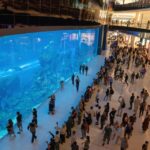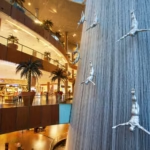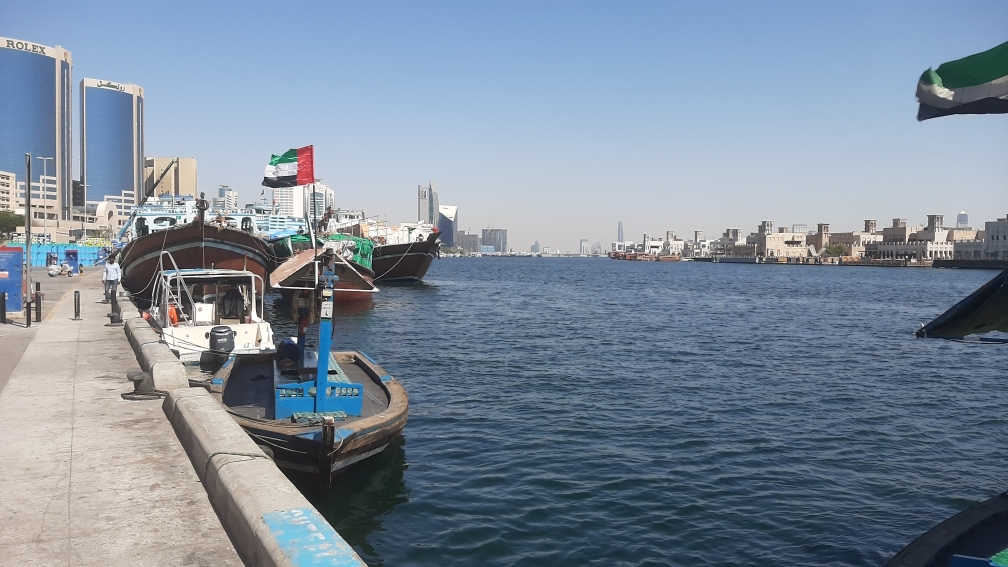
Introduction
Welcome to Dubai Creek, a historical and cultural landmark that has been the city’s heart for centuries. As a tourist guide, I am excited to take you on a journey through the rich history and trading culture of the Creek, as well as the exciting things to do and see at this iconic location.

The creek is one of my favorite places to hang out. If you love history, then this is the place to be in Dubai. There are so many exciting spots on both sides that it can take many trips. Then some trips can be taken by different types of boats during the day and evening.
In this post, we will talk about the traditional part of the creek. Other posts will cover the extension through Business Bay and Dubai Creek Harbour.
Table Of Contents
Characteristics
The Dubai Creek is a natural seawater inlet that extends 14 kilometers inland from the Arabian Gulf. The water in the creek is relatively calm and shallow, making it an ideal location for fishing, swimming, and water sports. The environment is also home to marine life, including fish, crabs, and shrimp.
The creek has a width of approximately 120 meters at its mouth and a depth of around seven meters. It runs through the city’s center and divides Dubai into two distinct parts – Deira and Bur Dubai. Four bridges cross the creek, including the iconic Al Maktoum Bridge, the largest and oldest bridge on the creek.
History
Dubai Creek, also known as Khor Dubai, has been a significant part of Dubai’s history for over 4,000 years. It was once the center of Dubai’s bustling trading activities and the lifeline that connected the city to the rest of the world. The creek was the primary trading port for pearl divers and fishermen sailing from its shores to the sea.
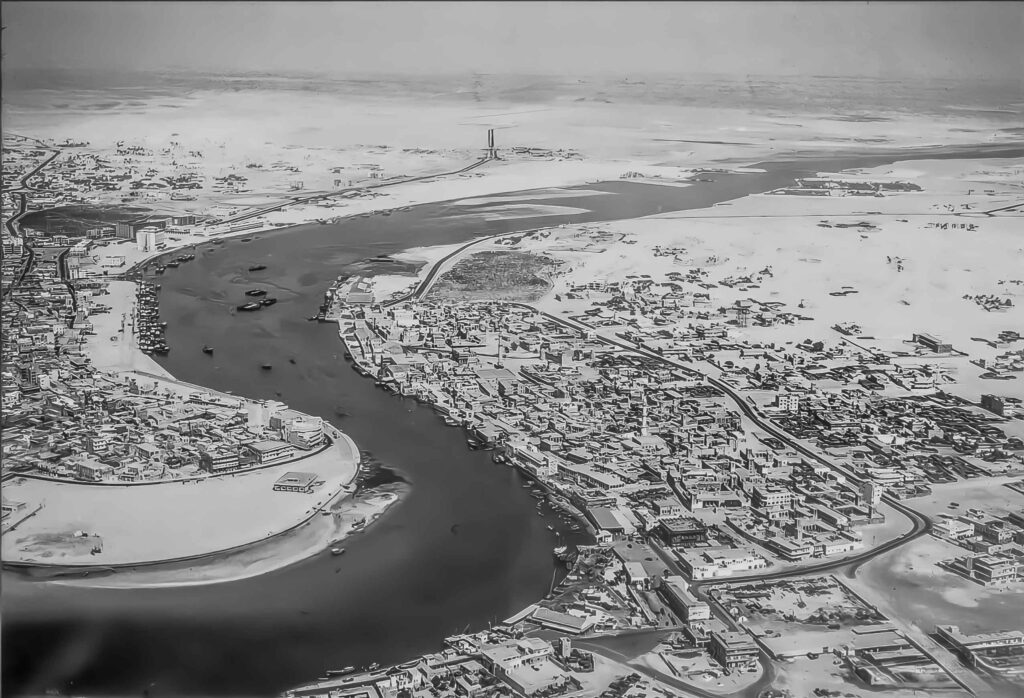
The creek’s importance grew exponentially during the 19th century as it became the center of Dubai’s booming pearl industry. This made Dubai Creek one of the busiest trading ports in the Gulf region, attracting traders from India, Persia, and East Africa. In the early 20th century, oil was discovered in the region, leading to Dubai’s rapid modernization and the pearl industry decline.
Trading
Today, Dubai Creek is still an important trading port with a different focus. It is now a hub for modern commerce, with cargo ships and container terminals handling goods worldwide. The creek is also home to a bustling fish market, where locals and tourists can buy fresh seafood and experience traditional trading.
Abras And Dhows
One of the most popular ways to experience Dubai Creek is by taking an Abra ride. Abras are traditional wooden boats used for transportation across the creek for centuries. These small boats are operated by skilled local boatmen, who ferry passengers across the creek for a small fee. An Abra ride is a great way to see the city skyline from the water and experience the hustle and bustle of the creek.
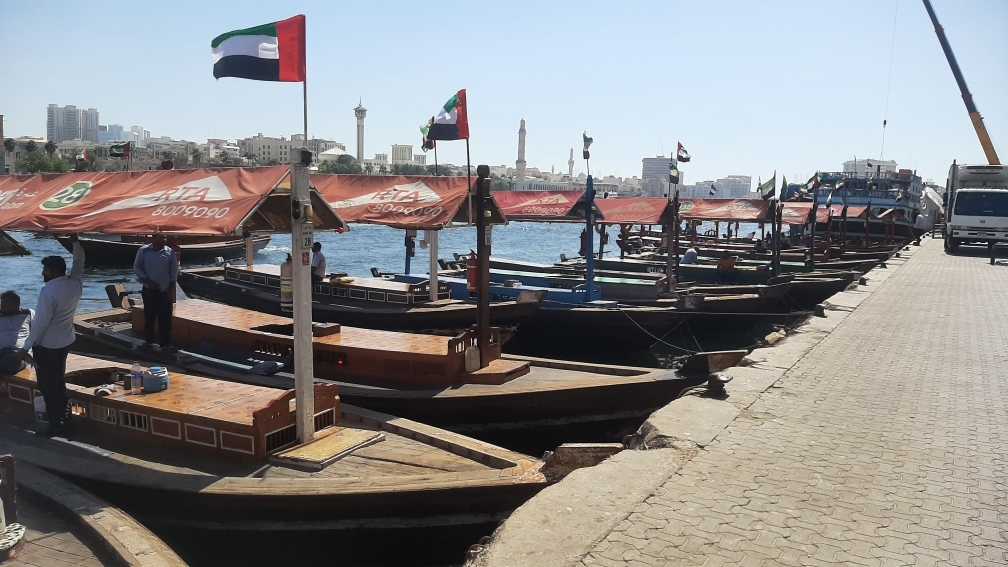
In addition to Abras, Dubai Creek is also home to many Dhows, traditional wooden cargo boats that have been used for centuries to transport goods across the Arabian Gulf. These beautiful boats can be seen lining the creek’s shores and are a testament to the city’s rich trading history.
How Dhows Are Used
Dhows are traditional sailing vessels used in the Arabian Gulf for centuries. These boats have played a significant role in the region’s history, particularly in maritime trade and transportation.
Dhows are typically made of wood and are characterized by their distinctive shape, which features a long, narrow body with a broad beam and a curved prow. The sail is usually triangular and made of cotton or other natural fibers. Depending on the size of the Dhow, it may have one or more masts.
In the past, dhows were primarily used for trading, with merchants using them to transport goods such as spices, textiles, and pearls from ports around the Gulf region. Today, while many traditional trade routes have been replaced by modern shipping methods, dhows continue to be used for transportation, particularly for goods such as fish and other seafood.
In addition to their use in trade and transportation, dhows are also a popular attraction for tourists visiting the creek. Visitors can ride on a traditional dhow, either as a part of a sightseeing tour or to enjoy a meal or entertainment on board. Many dhows have been modernized with amenities such as air conditioning and comfortable seating while retaining their traditional features and charm.
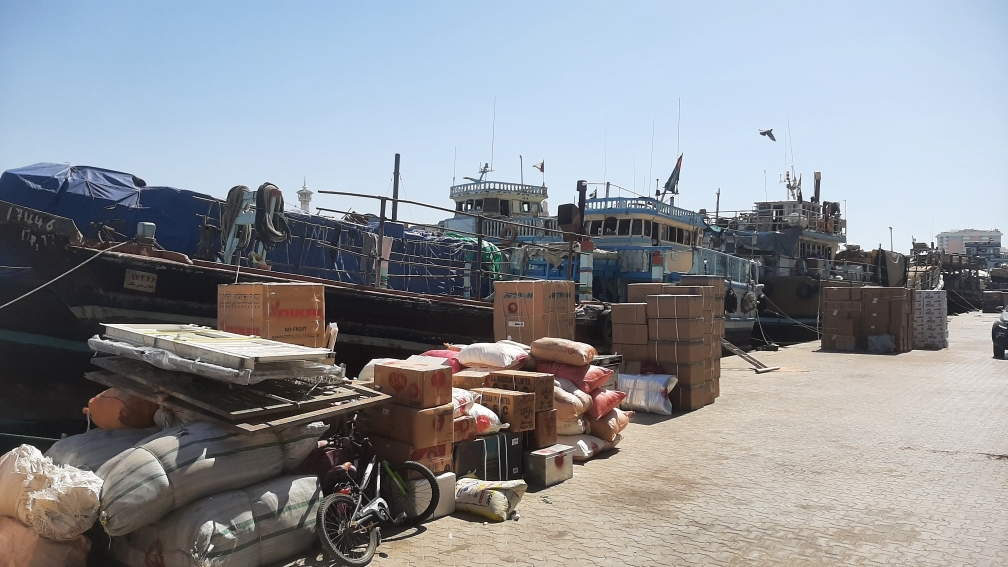
Things To Do
Dubai Creek is not just a historical landmark but also a cultural hub, with many exciting activities and sights to see. Here are some of the top things to do at the creek:
Visit the Dubai Museum: Located in the historic Al Fahidi Fort, the Dubai Museum offers a glimpse into the city’s past, with exhibits on traditional Emirati life, the pearl industry, and the creek’s importance to Dubai’s development.
Shop at the Gold Souk: The Gold Souk is a must-visit destination for anyone who loves jewelry. It’s located on the Deira side of Dubai Creek and has hundreds of shops selling gold, diamonds, and other precious stones.
Explore the Spice Souk: Just a short walk from the Gold Souk, the Spice Souk is a bustling market filled with exotic spices, herbs, and traditional medicines.
Dine at a traditional Arabic restaurant: Dubai Creek has many traditional Arabic restaurants serving delicious Emirati and Middle Eastern cuisine. Al Hallab, Bait Al Wakeel, and Al Fanar are some of the most popular restaurants in the area.
Cruises
There are a variety of cruises that depart from Dubai Creek, ranging from relaxing sunset cruises to exhilarating speedboat tours. Here are some of the most popular options:
Dhow Dinner Cruise: This is one of the most popular cruises on Dubai Creek, where you can enjoy a delicious dinner while cruising on a traditional Arabian dhow. You can take in the stunning views of the city skyline while listening to live Arabic music.
Sunset Cruise: This is a great way to experience the beautiful sunset over Dubai Creek. You can relax on a traditional wooden boat and watch the colors of the sky change as the sun sets over the city.
Speedboat Tour: For those who are looking for a more exhilarating experience, a speedboat tour is a great option. You can take a thrilling ride through the waters of the creek, seeing some of the city’s most famous landmarks from a unique perspective.
Fishing Trips: If you’re a fishing enthusiast, many fishing trips are available from Dubai Creek. You can spend the day fishing for various fish in the waters around the creek.
Pearl Diving Trips: For a truly unique experience, you can go on a pearl diving trip from Dubai Creek. You can learn about the traditional methods of pearl diving while exploring the underwater world of the Persian Gulf.
Most of these cruises depart from the Dubai Creek area, and you can easily book them through a tour operator or your hotel concierge. The prices vary depending on the type of cruise and the duration, but most of them are reasonably priced and offer great value for the money.
I have done several of these trips, which have always been a lot of fun. So enjoy!
Frequently Asked Questions Dubai Creek (FAQ)
What is Dubai Creek?
The creek is a saltwater creek located in the heart of Dubai. It is a natural inlet that extends from the Persian Gulf inland into the city, dividing the city into two parts – Deira and Bur Dubai.
How long is the creek?
The Dubai Creek is approximately 14 kilometers long, running from the Persian Gulf through the center of Dubai and ending at the Ras Al Khor Wildlife Sanctuary.
What is the history of Dubai Creek?
Dubai Creek has played a significant role in the city’s history, serving as a trading hub for merchants and pearl divers from around the region for centuries. The creek was also instrumental in developing Dubai’s economy and helped shape the city into what it is today.
What can you do at Dubai Creek?
There are plenty of things to do at Dubai Creek, including taking an Abra ride, exploring the traditional souks, visiting historical landmarks like Dubai Museum and Al Fahidi Historical Neighborhood, or simply enjoying the stunning waterfront views.
How do you get to Dubai Creek?
Dubai Creek is easily accessible by car, taxi, or public transportation. The closest metro station is Al Ras on the Green Line, just a short walk from the creek.
What is an Abra in Dubai?
An Abra is a traditional wooden boat used as a water taxi to cross Dubai Creek. It is one of the most popular ways to experience the creek and the surrounding areas.
What are the traditional boats in Dubai called?
For centuries, the region’s people have used traditional boats called dhows for fishing, transportation, and trading in Dubai.
Can you swim in the creek?
Due to the heavy boat traffic and strong currents, authorities prohibit swimming in Dubai Creek. However, many swimming pools and beaches nearby are safe for swimming.
What are the best restaurants at Dubai Creek?
Many excellent restaurants near Dubai Creek offer a range of cuisines worldwide. Some popular options include Bayt Al Wakeel, Al Fanar Restaurant & Cafe, and the Boardwalk.
Is the creek free to visit?
Yes, Dubai Creek is free to visit and explore. However, some attractions and activities may have admission fees or require a booking in advance.
Summary
| Statistic | Value |
|---|---|
| Location | Dubai, United Arab Emirates |
| Length | 14 kilometers |
| Width | Varies between 100 and 140 meters |
| Maximum depth | 5 meters |
| Area | Approximately 10 square kilometers |
| History | Used for trading and transportation for centuries |
| Popular attractions | Dubai Museum, Dubai Creek Park, Gold Souk, Spice Souk, Textile Souk |
| Traditional boats used | Abras and dhows |
| Transportation | Water taxis, Abras, and ferries |
| Future developments | Extension project to increase capacity and improve infrastructure |
Conclusion
Dubai Creek is a must-visit destination for anyone traveling to Dubai. It is a living testament to the city’s rich history and culture, bustling markets, traditional boats, and historical landmarks. Whether you want to take an Abra ride, shop at the souks, or dine at a traditional Arabic restaurant, Dubai Creek has something for everyone. So, come and explore this iconic landmark and experience the magic of Dubai’s past and present.
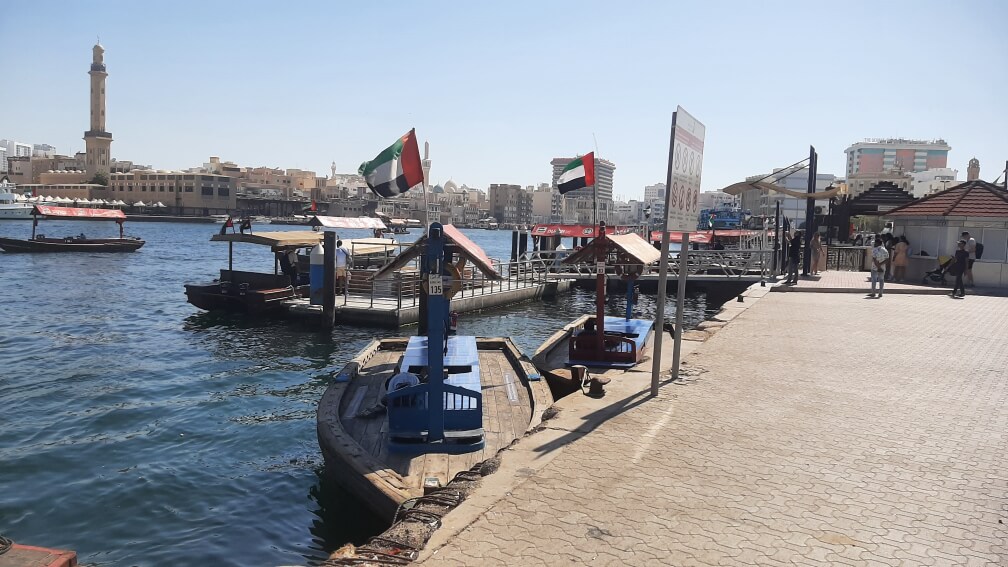
Useful Links
- More information about Dubai Creek can be found HERE.
- Looking to visit Dubai? Entry Requirements can be found here.
- A general guide to Dubai can be found here.
- Other attractions in Dubai can be found here.
- Looking for fine dining. Take a look here.
- The Spice Souq is alongside the Dubai Creek
- For Dubai’s history then check out the Al Fahidi Historical Neighborhood
- One of the most vibrant art and creativity locations: Alserkal Avenue.
Key Takeaways
- Dubai Creek is the heart of Dubai through its historical links to pearl fishing and trade with other countries.
- The creek is 14 km long, running from the Persian / Arabian Gulf to the Ras Al Khor Wildlife Sanctuary.
- Abras and Dhows are the two traditional ways of navigating through the Creek and into the Gulf. You can cross the Creek in either direction by spending AED 2 on an Abra. You can also hire them for mini cruises up and down the waterway.
- Due to the heavy boat traffic and strong currents, authorities prohibit swimming in the creek.
- The creek is easily accessible by car, taxi, or public transportation, with the closest metro station being Al Ras on the Green Line.

